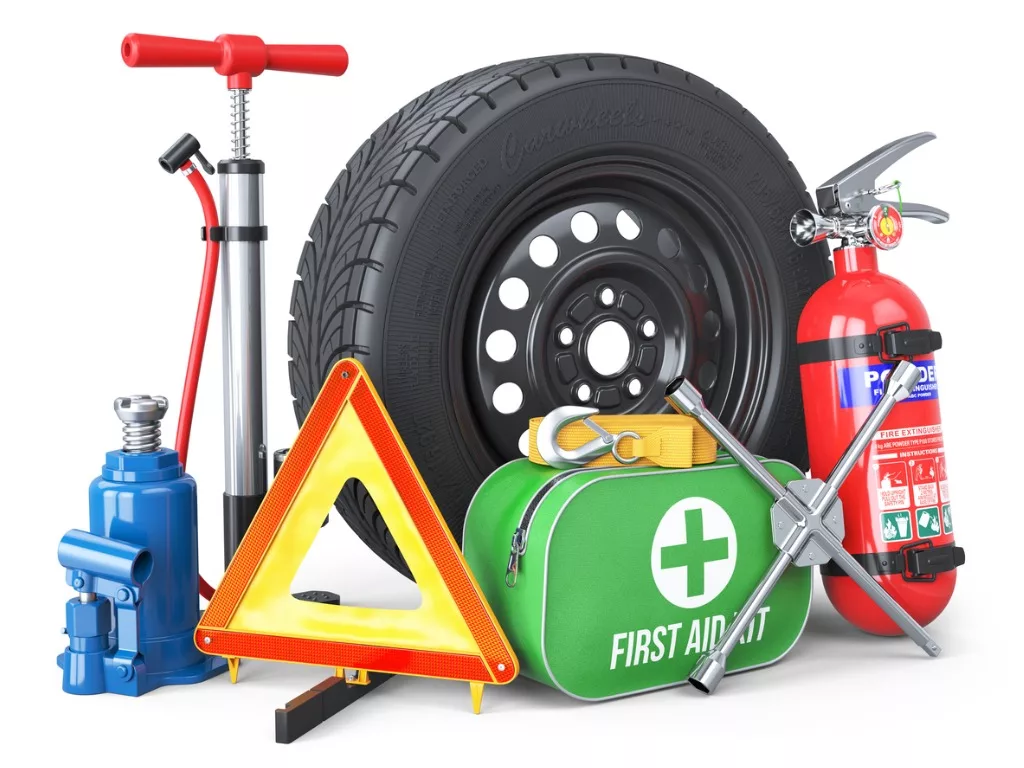Essential Items for Winter Preparedness
When building your winter car survival kit, it is crucial to include a comprehensive assortment of supplies. From tools to clothing and everything in between, here is a checklist to help you assemble an all-encompassing kit:
A Comprehensive Winter Survival Kit Checklist
An effective winter survival kit should include:
- An ice scraper and snow brush: These indispensable tools will help you clear your windshield and windows quickly and efficiently.
- Winter tires: Specially designed with deeper treads and better grip, winter tires provide optimal traction and help maintain control on slippery surfaces.
- A collapsible shovel: This compact and convenient tool can assist you in removing snow from around your tires and digging your vehicle out if it gets stuck.
- Extra warm clothing: Pack additional layers, including gloves, hats, scarves, and waterproof boots, to keep you warm in case of longer-than-anticipated roadside delays.
- A phone charger: Cold weather can significantly affect your phone’s battery life. Having a charger on hand will ensure that you can stay connected in case of an emergency.
- Jumper cables: Cold temperatures can drain your car battery more quickly. Jumper cables will allow you to jump-start your vehicle or help someone else in need.
- An external battery: In extreme cold, smartphones and electronic devices tend to lose battery power faster. An external battery pack can keep your devices charged when electricity is scarce.
- Cat litter: This unexpected winter survival tool provides traction on slippery surfaces. If your vehicle gets stuck on ice or snow, sprinkling cat litter nearby can enhance traction and help you get moving again.
- A first aid kit: Accidents can happen at any time, so always keep a well-stocked first aid kit in your vehicle, including bandages, antiseptic wipes, pain relievers, and any necessary medications.
- Food and water: Stock your winter car survival kit with non-perishable food items, such as granola bars and canned goods, as well as bottled water. These provisions can sustain you during extended periods of waiting or winter storms.
Must-Have Tools for Dealing with Snow and Ice
In addition to the items listed in the checklist above, it is also advisable to include the following tools to help you navigate through snow and ice:
- A snow shovel: A sturdy snow shovel can assist in clearing larger amounts of snow from around your vehicle.
- An ice scraper with a brush: This combination tool will help you remove ice and snow from not only your windshield but also the rest of your vehicle’s exterior.
- Tire chains or traction mats: These tools provide extra grip and traction when driving on particularly icy or slippery roads.
- A windshield de-icer: To save time and effort, keep a bottle of windshield de-icer handy for quickly removing ice buildup on your windshield.
Ice Scraper: Your Weapon Against Frosty Windshields
One of the most critical items in your winter car survival kit is an ice scraper. When frost blankets your car’s windshield, an ice scraper becomes your best friend. With its sharp edge, you can easily remove ice and frost, ensuring clear visibility before hitting the road.
Winter Tires: The Key to Safe and Secure Driving
Investing in winter tires is a smart move if you live in an area prone to heavy snowfall and icy conditions. Winter tires are specifically designed to provide better traction, reduce stopping distances, and improve overall handling on snowy and icy roads. Their innovative tread designs and rubber compounds ensure optimal grip, enhancing both your safety and the safety of other drivers around you.
Collapsible Shovel: Compact and Convenient Snow Removal
When stuck in snow, a collapsible shovel can be a lifesaver. Its compact size allows for easy storage in your trunk, and its durable design enables efficient snow removal around your tires and under your vehicle. By digging yourself out of a snowy situation, you can regain mobility and continue your journey.
Stay Warm and Dry with Extra Clothing
Winter driving can expose you to frigid temperatures and harsh weather conditions. To protect yourself against the elements, pack extra warm clothing in your car survival kit. Layered clothing, waterproof outerwear, and insulating accessories will keep you comfortable and cozy, even during extended periods of waiting or unforeseen car troubles.
Jumper Cables: Be Prepared for Battery Emergencies
As temperatures drop, car batteries often struggle to deliver the necessary power to start the engine. Jumper cables provide a quick and straightforward solution for jump-starting your vehicle or helping a fellow driver in need. By having jumper cables on hand, you can confidently handle cold-weather battery emergencies.
External Battery: Power On-the-Go in Freezing Temperatures
Cold weather can significantly impact the battery life of electronic devices, including smartphones and tablets. An external battery pack, designed to withstand freezing temperatures, ensures that you have additional power when you need it most. With an external battery, you can stay connected and powered up, regardless of the cold weather.
Cat Litter: A Surprising Winter Survival Tool
While it may seem unusual, cat litter can be a valuable tool for navigating through icy conditions. By sprinkling cat litter around your tires when stuck on ice or snow, you can improve traction and increase your chances of successfully freeing your vehicle. Its gritty texture provides much-needed grip on slippery surfaces.
First Aid Kit: Be Ready for Winter Accidents
Accidents can happen at any time, and during winter, the risk of slips, falls, and other mishaps increases. Having a well-equipped first aid kit in your car can make a significant difference in addressing minor injuries promptly. Make sure your kit includes adhesive bandages, antiseptic wipes, pain relievers, and any personal medications you may need.
You never know when an accident might befall you, so ensure you’re properly prepared by implementing some of these tips!
















